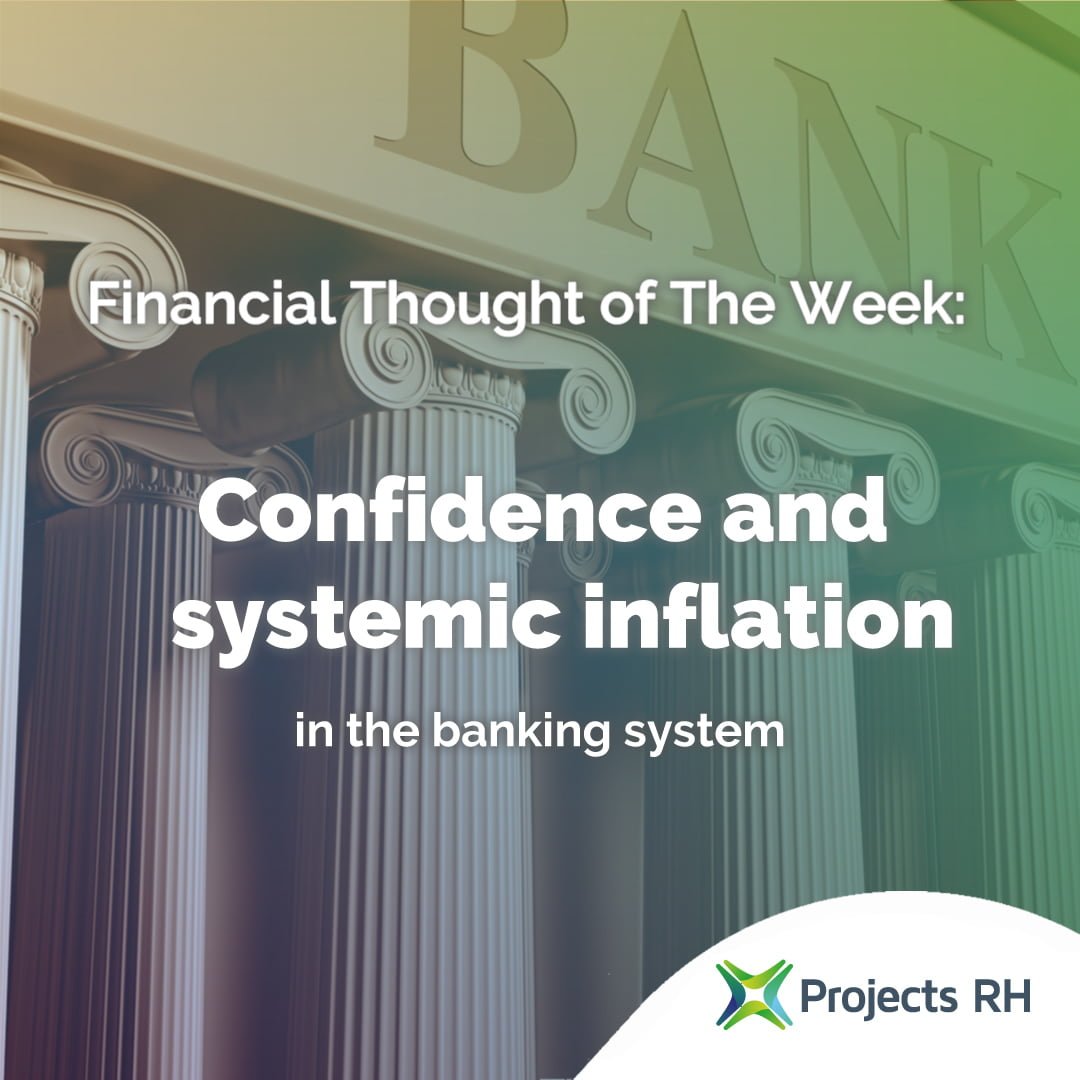The complex panorama
In modern banking, as always, the key is deposited confidence in the financial institution which holds our money. In simplistic terms, banks receive deposits and make loans and from the spread between the two they seek to make a profit. Now modern banks make money in many other ways through fees charges and services in managing our money.
Banks make loans and manage risk. They also maintain capital reserves in case something goes wrong and to meet and even cash flows.
Today banks maintain quite complex Treasurer operations which match loans with deposits, and some of their loans are in the form of purchased long dated government securities. This is even now regulated. Banks are also required to have equity and, together with certain government securities and equities, there are capital requirements.
Banks are not always the winner when there is an increase in interest rates. Yes, they may receive a small increase in margin which they don’t have to pay away, but most variable loans are funded of variable deposits. The issue really occurs where they buy long dated (10 year) securities. If interest rates rise and interest rates rise across the year and bankable make a capital loss if they have to sell those securities. If they don’t have to sell securities, they will make a loss of revenue account.
The real issue emerges if there is a crisis and I have to sell those securities and they incur a capital loss, their reserves are not worth what they thought they were, all they have advised the regulator they have as a reserve.
My experience is Treasury is the heart of the bank and they maintain information as to the present value of their portfolios and this too is reported to boards and management. The issue emerges when this is not reported and therefore not topped up. When a run occurs, and the bank seeks to sell some of its securities to pay depositors back they simply may not have sufficient securities to meet their immediate cash obligations[1].
Secondly, around the world most large financial institutions are required to have sectoral and geographical diversification.
A fragile market?
Confidence is the key to banking. When there are large interest-rate moves depositors look to see what they’re getting and move their money to get an appropriate reward. In short, most of the bank’s deposits are on demand and its assets are illiquid. Banks rely on each other for temporary liquidity – this problem is for the 16th largest bank in the US it was not there when it wanted it because of its abnormal depositor base – when they know themselves to be under stress.[2]
Markets are fickle and movements in interest rates or in other markets cause clients and investors to review their deposits and share ownership.
The growth of non-bank financial institutions, Fintechs, crypto currency, and other places where wealth may be stored only adds to the fragility of the markets.
For the record, structure of the Australia, Canada, Singapore and UK banking systems are significantly different to those per in United States. In the US there continues to be significant numbers of local and focused banks, which, by their nature are subject to greater fluctuations across the portfolios.
Will we suffer contagion?
The collapse of Silicon Valley Bank (SVB) a US 200bn institution cannot be taken lightly[3] and it was right for there to be concerns about contagion. Banks, given their nature, hold money on behalf of each other and are engaged intermediation almost continuously. SBV was recognized as a tech sector bank[4] .The market was seeing that sector was having issues.
Central banks, led by the US Fed, will continue to lift interest rates in this cycle and we must be ready for other issues within the banking system. [5]
At Projects RH we are concerned that the most vulnerable banks are those with either a narrow geographic focus or a market segment focus. We are expecting to see no sympathy for banks which are heavily involved in money laundering, closing this week when we need crypto or trade with non-aligned countries.[6] We would suggest clients that if they need to maintain funds in the US or Europe that they focus on known names.
The US Regulatory Environment
The regulatory environment in the US is significantly different to that in Australia, Canada, New Zealand, Singapore, and the United Kingdom. Each of these countries has significant monitoring of the financial institutions and mediums of support of depositors.
Events now with three bank failures are not as significant to the banking system as a policy of the central bank to manage the economy by increasing interest rates.
Many are pointing to the rollback of regulations in the United States for tier 2 banks which occurred during the Trump presidency[7]. Trump lifted the threshold for full regulation from USD 50bn to USD 250 bn. At this point banks were no long subject to stress testing – something that would have indicated the issues associated with SVB, Silvergate and Signature.
Interesting times
If on the global stage confidence is the name of the game, we have an interesting time ahead of us. The events at Credit Suisse in the three US banks are not the only events occurring which cause concern with the banking system. This concern will not be alleviated by increases in interest rates and volatility in the bond market. These events however are important part of the free enterprise system and investors plus depositors in banks must manage their risk.
While we are not expecting a market wide correction, we should always be ready and taking expert advice from people who are in the markets.
By Paul Raftery, CEO Projects RH, Sydney
If you have any questions, please call +61 418 486 015.
—————–
[1] Cranston, M., and Rapoport, p.; “Bank runs loom in SVB collapse”, -The Australian Financial Review, 3/13/2023.
[2] Cranston, M.; ‘Is this a Lehman Brothers moment? God, I hope not’” – The Australian Financial Review, 3/13/2023.
[3] See “Investors brace for fallout from Silicon Valley Bank”, The Economist (on-line, 12th March, 2023.
[4] Lashinsky, A.; “Why SVB collapse is a tech story”, The Australian Financial Review, 3/13/2023
[5] Blundell-Wignall, A.; “The SVB collapse is no reason for the Federal Reserve to pause”, The Australian Financial Review, 3/16/2023.
[6] Greenwood, R.;” Who gets saved, who sinks and what are the risks?”, The Weekend Australian, 18th March, 2023.
[7] Durie, J.; “Bank risk policy compounds the rate of concern”, The Weekend Australian, 17 March, 2023.




